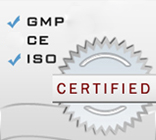
ELISA Kits
- • Anemia ELISA kits
- • Allergy ELISA kits
- • Autoimmune Disease kits
- • Bone Metabolism ELISA kits
- • Blood bank ELISA kits
- • Cancer ELISA kits
- • Cardiac Markers ELISA kits
- • Diabetes Assays ELISA kits
- • Drug test ELISA kits
- • Fertility ELISA kits
- • Food ELISA kits
- • Infectious Disease ELISA kits
- • Other ELISA Kits
- • Parasitology ELISA kits
- • Steroid ELISA kits
- • Thyroid ELISA kits
Rapid Tests
- • Allergy Rapid tests
- • Bone Metabolism
- • Cancer Rapid tests
- • Cardiac markers Rapid tests
- • Drug Tests
- • Fertility Rapid tests
- • Hepatitis Panel
- • Infectious Disease & other tests
- • Other
- • Ovulation Rapid tests
- • Pregnancy tests
- • Urine Reagent Strips tests
IFA Kits
Chemiluminescence Immuno Assays
- • Allergy Assays
- • Autoimmune Thyroid Assays
- • Cardio-Vascular Monitoring
- • Diabetes Assays
- • Fertility Assays
- • Growth Deficiency
- • Infectious Disease Assays
- • Others
- • Steroid Assays
- • Thyroid Assays
- • Tumor Marker Assays
Serology Tests
- • ASO (Anti-Streptolysin-O)
- • CRP (C-Reactive Protein)
- • Mono (Infectious Mononucleosis)
- • RF (Rheumatoid Factor)
- • RPR (Rapid Plasma Reagin)
- • SLE (Systemic Lupus Erythematosus)
Instrumentation



Soy ELISA kit
| Name |
Soy ELISA Test |
|---|---|
| Full name |
Food Soy Protein ELISA Test Kit |
| Category Name | Food ELISA kits |
| Test | 96 |
| Method | Enzyme Linked Immunosorbent Assay |
| Principle | Quantitative |
| Detection Range | Qualitative elisa assay- Positive, Negative Controls |
| Sample | 1 g |
| Sensitivity | 16 ppb |
| Total Time | ~ 60 min. |
| Shelf Life | 12 Months from the manufacturing date |
 |
 |
 |
Soy ELISA kit description:
The Diagnostic Automation, Inc. Soy Protein ELISA kit is a quantitative Enzyme Linked Immunosorbent Assay. This Soy ELISA test represents a highly sensitive detection system on the base of STI and is particularly capable of the quantification of soy residues in cookies, cereals, ice cream, chocolate, instant soups and sausage.
Materials Provided with Soy ELISA Test Kit:
1. Microtiter plate: 12 strips with 8 breakable wells coated with anti-STI antibodies
2. STI standards: (0, 40, 100, 400, 1000 ppb of STI): 5 vials with 1.0 mL each
3. Conjugate (anti- STI-peroxidase): 15 mL
4. Substrate Solution (TMB): 15 mL
5. Stop Solution (0.5 M H2SO4): 15 mL
6. Extraction and sample dilution buffer (Tris): 2 x
7. Washing Solution (PBS + Tween 20): 60 mL as 10x
8. Plastic bag to store unused microtiter strips.
9. Instruction Manual
Materials required but not provided:
1. Freshly distilled or deionized water
2. Dispensing system and/or pipette
3. EIA kit Microplate washer
4. EIA kit Microplate Reader with 450nm wavelength
Soy ELISA Test Kit Background Information:
Soy (Glycine max) belongs to the legumes. With 39% the fraction of proteins in soy beans is very high. Many of these proteins are known for being allergenic, such as Gly m1, Glycinin, Kunitz-Trypsin-Inhibitor and Gly m4 which is known to be cross reactive to birch pollen allergen Bet v1. For this reason soy represents an important food allergen. For soy allergic persons hidden soy allergens in food are a critical problem. Already very low amounts of soy can cause allergic reactions, which may lead to anaphylactic shock in severe cases. Because of this, soy allergic persons must strictly avoid the consumption of soy or soy containing food. Partly undeclared addition of soy as additive in many foods is of particular importance. Cross-contaminations, mostly in consequence of the production process are representing another problem. The chocolate production process is a representative example. For this reason sensitive detection systems for soy residues in foodstuffs are required. Only a few soy proteins are stable to conventional production processes (for example high temperature). For this reason robust indicator proteins are necessary for detection. Soy trypsin inhibitors (STI) are representing such proteins.The Diagnostic Automation, Inc. Soy ELISA represents a highly sensitive detection system on the base of STI and is particularly capable of the quantification of soy residues in cookies, cereals, ice cream, chocolate, instant soups and sausage.
Soy ELISA Test Principle:
The Diagnostic Automation, Inc. Soy quantitative test is based on the principle of the enzyme linked immunosorbent assay. An antibody directed against STI is bound on the surface of a microtiter plate. Soy containing samples or standards are given into the wells of the microtiter plate.
Diagnostic Automation Inc offers several popular Food Allergen ELISA Kits: Egg ELISA Kit, Lupine ELISA Kit, Mustard ELISA Kit, Peanut ELISA Kit, Soy ELISA Kit, Almond ELISA Kit, Gluten ELISA Kit, Walnut ELISA Kit, and Milk Protein Residue Detection in Food ELISA Kit. For more information on any of these Food ELISA Test Kits please see our website home page, or contact our Customer Service Representative at 818-591-3030.
The limit of detection (LOD) of the Diagnostic Automation, Inc. Soy test is 16 ppb STI. Validation experiments with soy products showed that this corresponds approximately to a LOD of 0.7 / 7.5 ppm soy flour (unroasted / roasted), 40 ppm soy milk and 800 ppm tofu. The limit of quantification (LOQ) of the Diagnostic Automation, Inc. is 40 ppb STI. Due to the variety of sample matrices and their influence on the blank, results less than the LOQ should be treated as negative. For linearity study, the serial dilution of spiked samples (cookies, cereals, ice cream, chocolate, instant soup and sausage) resulted in a dilution linearity of 81 to 114 percent. Store kit in 2-8 C.
ELISA kits - Rapid tests- Drug tests- Pregnancy test - IFA kits - CLIA assays - Serology tests - Instrumentation
©1992 Diagnostic Automation/Cortez Diagnostics Inc. All rights reserved.








